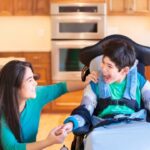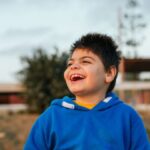Children with cerebral palsy already have a difficult time regulating their body temperature, and
cold weather can bring some negative symptoms. In most cases, the hypothalamus is often
damaged with cerebral palsy, which might result in autonomic nervous system dysfunction. It is
important to be highly prepared for the beginning of winter weather with any type of cerebral
palsy to reduce any negative symptoms that may arise.
The Autonomic Nervous System & Hypothalamus
Since the hypothalamus may be damaged in children with cerebral palsy, children may experience body dysfunction and other organ-related disorders/diseases. When the weather is cold, the hypothalamus will sense it and send signals to the muscles that make a person shiver, creating warmth. Children with cerebral palsy might not have this basic function because of the potentially damaged hypothalamus and autonomic nervous system. The hypothalamus might also signal the brain to constrict blood vessels to prevent heat loss, but in children with cerebral palsy, this might also not be possible.
Preparing for Winter Weather Conditions
Keeping the body warm is essential, and traveling with additional winter clothing can cut down the possibilities of negative symptoms associated with freezing conditions. Sizing up in clothing can also make it simple to layer on top of braces and Velcro straps, making them easier to remove. If residing in a place with frequent or excessive snowfall, it might help to invest in wheelchair tires with extra traction and reinforce ramps. Colder weather affects muscle movements and spasms as well, so acquiring wearable safety materials is imperative.
Other ways to combat weather conditions may include:
– Drinking or eating something warm/cool
– Maintaining heat/air sources in the home and vehicle
– Dress appropriately for current conditions
– Warm or cool baths
– Bring warm or cool water bottles
– Travel with extra essential items in case of emergency
– Medical equipment, blankets, thermal winter clothing, warm/cold compressions
– Stretch muscles often in a safe way to avoid stiffness or spasms
This may feel overwhelming at first, but you will be better prepared for many weather-related situations. Be sure to monitor children closely, and be aware of any signs or symptoms of hypothermia or heat stroke. By staying prepared for any weather conditions, your family can maintain a comfortable and regular routine while minimizing any weather-related complications.






